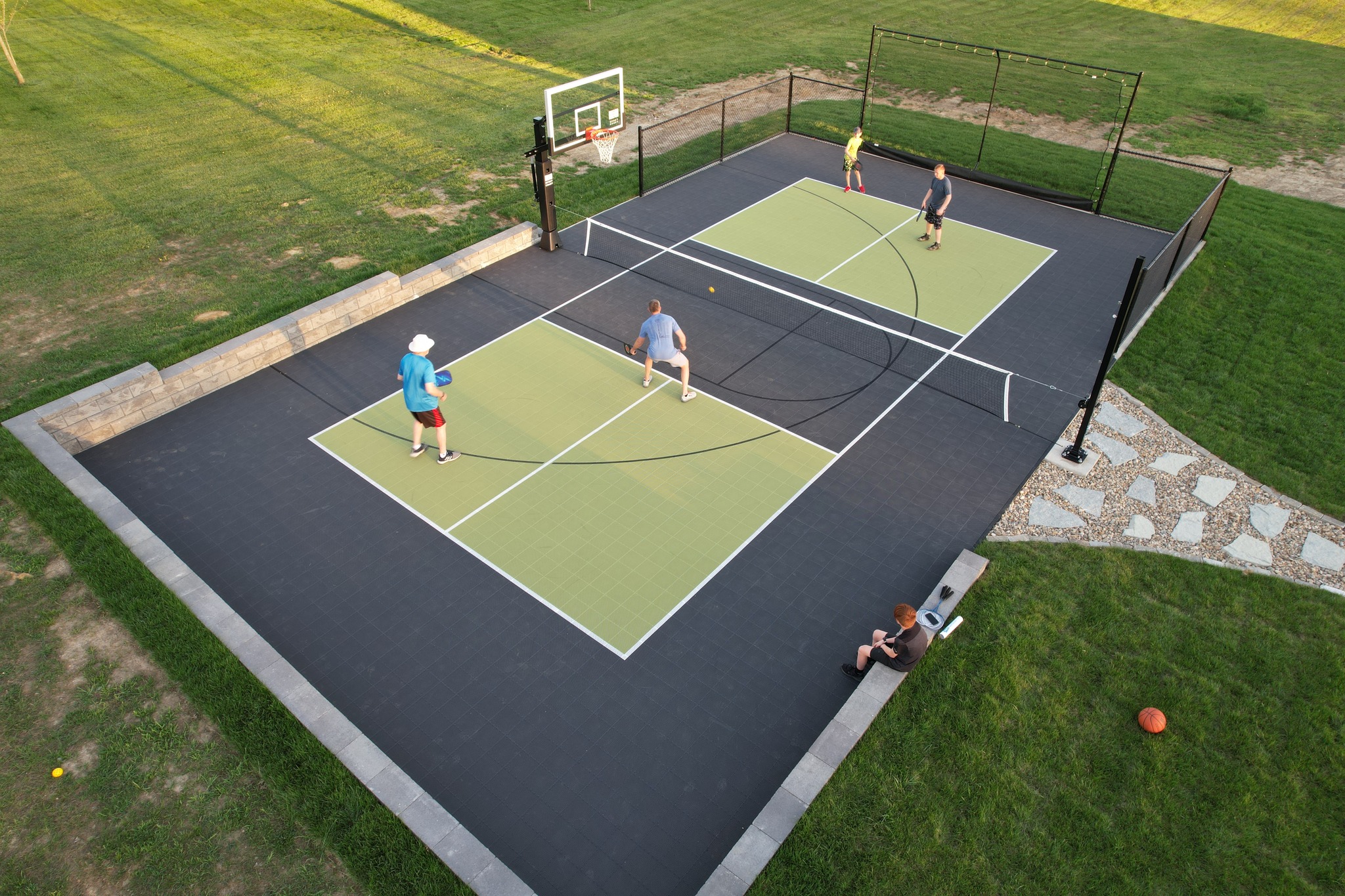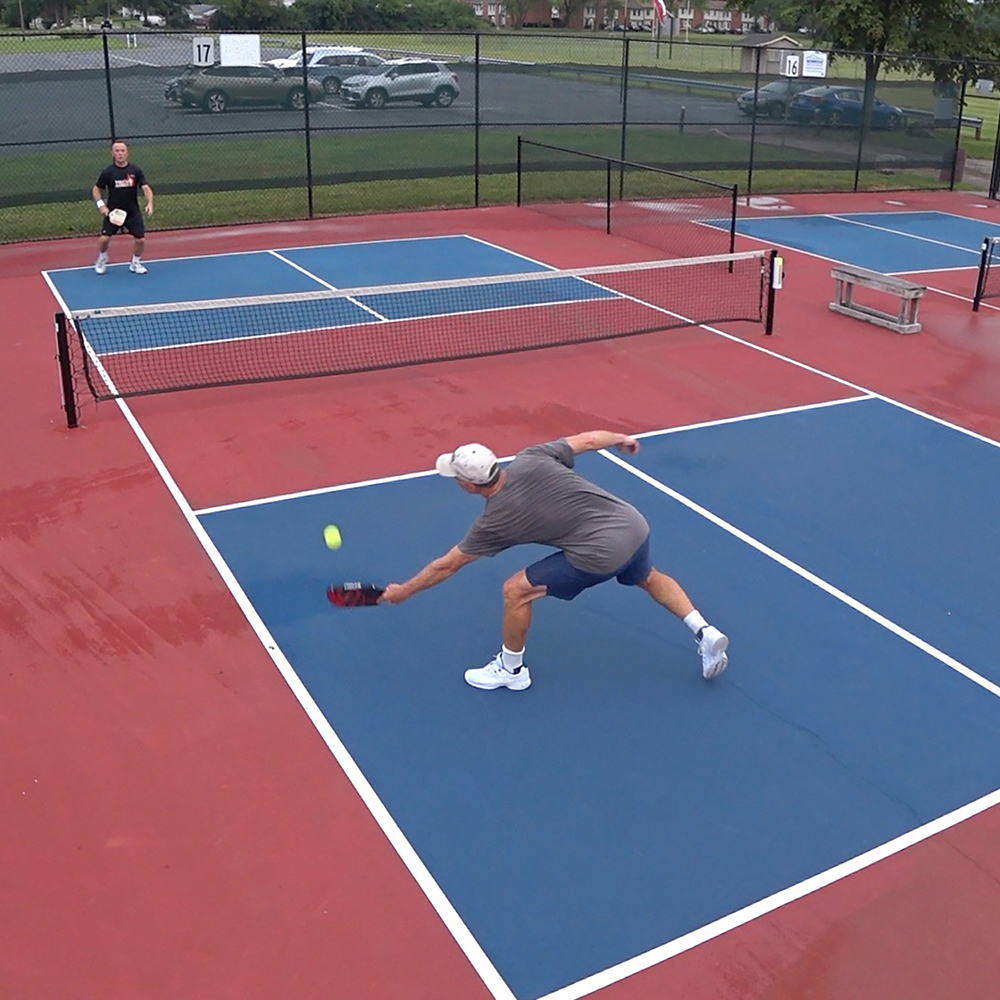How to Choose the Right Materials for Pickleball Court Construction
How to Choose the Right Materials for Pickleball Court Construction
Blog Article
Increase Citizen Involvement With Community-Driven Pickleball Court Projects
The emergence of community-driven pickleball court projects offers an one-of-a-kind possibility to foster local interaction and strengthen community connections. The real question remains: how can these grassroots initiatives be strategically applied to guarantee sustainability and inclusivity in varied neighborhoods?
Importance of Neighborhood Engagement
Area involvement is an essential component in the successful growth of pickleball court jobs, as it promotes a sense of possession and cumulative duty among residents. When area participants are proactively entailed in the planning and execution phases, they are most likely to advocate for the task's lasting success. Involving stakeholders such as neighborhood players, family members, and recreational teams guarantees that the facilities satisfy the varied requirements and preferences of the neighborhood.
Additionally, area interaction grows a helpful environment where residents feel empowered to contribute their sources and concepts. Pickleball court construction. This joint technique can cause ingenious services that boost the style and capability of the courts, making them extra attractive to a bigger target market. Additionally, involving homeowners in decision-making processes can reinforce social ties, advertising inclusivity and unity within the neighborhood
The visibility of area assistance for a pickleball task can also play an essential role in securing financing and authorization from neighborhood authorities. By demonstrating a shared dedication to leisure development, neighborhoods can efficiently advocate for resources and plan modifications that prefer the facility of pickleball courts, eventually enhancing the neighborhood society and entertainment landscape.
Actions to Start a Job
Starting a pickleball court task requires a methodical method that improves the foundation of area involvement established in previous discussions. The primary step is to put together a task board making up neighborhood stakeholders, enthusiasts, and agents from pertinent organizations. This varied team makes certain that several viewpoints are thought about.
Next, carry out a needs evaluation within the community. Surveys, emphasis groups, and public meetings can be reliable in assessing passion and event input on potential court areas, wanted facilities, and scheduling preferences. Following this, develop a task plan detailing responsibilities, purposes, and timelines.
When the plan remains in location, involve with neighborhood authorities to recognize zoning guidelines and any needed licenses. Communicating transparently with the neighborhood throughout this procedure is crucial, as it cultivates count on and encourages additional engagement.
Furthermore, organizing area occasions can aid maintain momentum and excitement. These occasions can function as systems for additional discussion and assistance to enhance community connections. Finally, document every step taken and keep comprehensive records, as this will certainly be helpful for future stages of the job, consisting of financing and resource purchase.
Funding and Resources Available
Safeguarding funding and sources for a pickleball court project is typically an important action that can figure out the project's usefulness and success. Different avenues exist for obtaining financial backing, varying from public financing to exclusive sponsorships. Regional federal government grants, commonly targeted at advertising neighborhood health and wellness and leisure, can supply substantial sponsorship for such campaigns.
In addition to federal government resources, not-for-profit organizations and structures often provide gives particularly for sporting activities and area advancement tasks. Involving neighborhood services as enrollers can additionally be a worthwhile technique; lots of firms aspire to spend in area campaigns that boost their corporate social obligation account.
Crowdfunding systems have arised as a feasible site link option for grassroots fundraising, making it possible for area members to add straight to the task. This approach not only raises funds but additionally promotes a sense of ownership amongst individuals.
Style and Preparation Considerations
Efficient style and planning are essential parts of any successful pickleball court project complying with the acquisition of funding and resources. A thorough assessment of the suggested place is important; this consists of analyzing access, distance to existing area features, and the potential for visibility and involvement.
The design of the court need to stick to official size specs while taking into consideration the bordering setting. Including functions such as seats, shade structures, and ideal lights can dramatically boost player experience and spectator pleasure. Products chosen for the court surface area should focus on toughness and safety and security, with alternatives like acrylic or asphalt offering optimal performance.
Including area participants in the style process fosters a sense of possession and makes certain that the center meets regional needs - Pickleball court construction. This can be achieved via public examinations and studies, allowing stakeholders to share their preferences and concerns
Sustainability must likewise be a top priority; incorporating green products and techniques can add to lasting viability. Finally, creating a maintenance strategy to make certain the court continues to be in exceptional problem will support recurring community engagement and participation in pickleball tasks.

Success Stories and Instance Studies
Highlighting the transformative impact of community-driven efforts, a number of success stories show exactly how collaborative efforts have actually led to the advancement of vibrant pickleball courts across numerous areas. One notable instance is the effort in a small community in Florida, where homeowners grouped together to transform an underutilized tennis court into a committed pickleball facility. Via fundraising events and collaborations with regional businesses, the area raised enough funds to install brand-new nets, resurfacing, and lines, eventually fostering a vibrant center for regional gamers.
Similarly, in a suburb of California, a grassroots activity emerged to produce pickleball courts in a neighborhood park. The job not just engaged volunteers for building yet also included workshops to involve area members in the sporting activity. Therefore, the courts became a prime focus for social communication and physical fitness, bring in click here to read players of any ages.
These study view publisher site exhibit just how community-driven projects can improve neighborhood interaction, advertise exercise, and strengthen social bonds. By leveraging cumulative sources and interest, areas can successfully sustain and produce pickleball centers that offer diverse populaces and foster a sense of belonging.

Verdict
By focusing on stakeholder participation throughout the preparation and implementation stages, these campaigns can successfully attend to diverse area demands. Inevitably, such efforts add to the transformation of public areas right into vibrant centers of fitness and social interaction, reinforcing area ties.
The emergence of community-driven pickleball court projects offers an unique chance to promote regional engagement and reinforce neighborhood ties.Neighborhood engagement is a vital component in the effective development of pickleball court projects, as it fosters a sense of ownership and collective responsibility amongst citizens. When neighborhood members are proactively included in the preparation and execution stages, they are a lot more likely to promote for the project's lasting success.Starting a pickleball court task calls for a systematic approach that builds on the structure of community interaction developed in previous conversations. The task not just involved volunteers for building yet additionally included workshops to involve area participants in the sporting activity.
Report this page